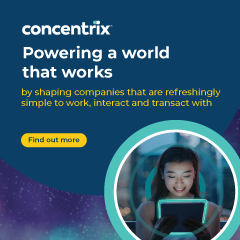[Interview] Building inclusive cultures in retail: Insights from DE&I expert Gareth Whalley
Gareth Whalley, Founder of Big Bang People Solutions discusses the challenges, strategies, and future trends of implementing diversity, equity, and inclusion in the retail sector, offering practical advice for fostering a cohesive and supportive work environment.
What are the challenges of implementing DE&I strategies in the retail sector?
Firstly, I’d say that as an industry, nobody has ‘cracked it’ just yet—there is still a lot of work to do. Cultural changes are tough to achieve, especially when it comes to reaching non-desk/office-based employees who in retail, work on the shop floor. It takes serious intention and innovation to make a DE&I strategy work in that context, and engaging people around it is challenging.
Secondly, there is a fast-growing generational change—at the last organisation I worked at, 75% of the retail workforce in Europe was Gen Z. If you’re not listening to and catering to those voices, you’re missing a trick. Attracting and especially retaining the best talent to keep loyal consumers coming back and achieve company growth aspirations requires listening and responding to employee needs.
How do you measure the success of DE&I initiatives in retail?
It’s not always easily measurable, but we can track several key metrics to gauge the success of initiatives. For example, we can measure demographic representation, experiences of inclusion and belonging (via surveys), and outcomes like intent to stay with the organisation. Additionally, can we look at participation rates in DE&I events and training sessions, though these alone don’t capture the full impact. Some initiatives focus on raising awareness and education rather than measurable outcomes. While we can track the activities themselves, the real impact on culture might not be easily quantifiable. It’s about building a psychologically safe environment, where diversity is celebrated and can flourish, and ensuring continuous engagement and learning.
What do you mean by psychological safety?
Never Miss a Retail Update!Psychological safety, a concept developed by Amy Edmondson from Harvard, is the shared belief that a team is safe for interpersonal risk-taking. It means that team members feel safe to be their full selves, challenge the status quo, and take risks without fear of being judged. If employees don’t feel safe to express themselves or suggest improvements, they won’t feel included and their full potential won’t be realised. This impacts how they contribute to their job and interact with customers. Creating an environment of psychological safety encourages openness, innovation, and a sense of belonging, which are crucial for a thriving workplace.
What qualities do you believe are essential for a DE&I leader in the retail sector?
Capturing the hearts and minds of senior leaders is crucial. They need to embark on their own learning journey, developing empathy and understanding the different experiences within their organisation, and how they might be impacting those experiences. A DE&I leader must help those with majority identities to recognise that their experiences are different from those of marginalised groups. Empathy is a skill that can be developed, not simply an innate trait that we either have or we don’t, and leaders must integrate this into their daily interactions and decision-making. This involves looking at both business decisions (such as supplier selection) and people decisions (such as hiring, promotion, or development opportunities) through the lenses of diversity, equity, and inclusion.
Empathetic and inclusive leadership must be important. Is this something that can be trained and how do you ensure training is effective across different levels of the organisation?
Empathetic and inclusive leadership can definitely be taught, and that’s for everyone, not just those considered to be senior leaders in their organisation. Typically, the DE&I team sets the strategy and tone for learning interventions, while the L&D team develops this into deliverable training. This can be through classroom sessions, e-learning, or video platforms. It’s also important to integrate DE&I principles into all leadership training, not just specific training on inclusive leadership, to ensure it’s part of the organisational fabric and that leaders at all levels are equipped to build an inclusive space.
How do you build an inclusive culture and advocate for DE&I across all levels in retail?
What works at head office won’t necessarily work in stores, for obvious reasons. Ensuring you build a cohesive, inclusive offering that connects ‘corporate’ and ‘frontline’ staff goes back to leadership behaviours, intentional engagement, and effective strategies and tactics. Use internal communications platforms like Yammer or Facebook Workplace to connect staff with company news, including DE&I stories. Store management should include cultural and DE&I updates in staff meetings and can offer recognition, such as time off the shop floor, for top performers to attend DE&I webinars.
Creating a supportive environment where staff feel connected to the bigger picture is key.
How do you handle resistance from employees or management?
I’m happy to say I personally haven’t experienced much heavy pushback, but I acknowledge that this happens a lot in many organisations. As I said earlier, capturing the hearts and minds of senior leaders is essential. They need to go on their own learning journey, developing empathy and understanding of different experiences within their organisation. Sometimes pushback is rooted in a lack of understanding or fear of change which can be addressed through education and, most importantly, bold and honest dialogue.
I’m a big fan of building solid relationships that allow you to create a safe space for people to be vulnerable and explore with curiosity. And again, demonstrating empathy and care, even towards those who are not in agreement with what you’re trying to achieve.
Is engaging with the broader retail workforce solely the responsibility of DE&I teams? What are the benefits of this engagement?
No, this shouldn’t just be the job of DE&I and L&D teams. For example, Levi’s has a DE&I Ambassador program in Europe which gets store team members who are passionate about DE&I to research relevant and timely topics, pull materials together, and share and interact with peers. This educates and raises awareness within the team and strengthens community ties. Many companies have similar programs, as well as Employee Resource Groups (ERGs), to help with this engagement. Participating in local events or celebrations helps staff feel more connected to their colleagues and in some cases their local community. The benefits? It boosts employee morale and creates a sense of belonging and purpose—this of course leads to higher retention and better overall performance.
What are the future trends in DE&I for retail, and how can organisations prepare?
2020 was a moment of reckoning. The murder of George Floyd and the pandemic provoked reflections and reactions that people had never had before. While it had some negative repercussions on DE&I overall, it also served as a wake-up call. More people are now not only on their personal journey but exploring beyond race and gender into other dimensions of diversity. However, as time has passed the conversation has died down and indeed been subject to some backlash, and unfortunately economic uncertainty can make DE&I feel dispensable in some organisations.
Moving forward, the challenge will be to maintain DE&I as a strategic business priority, resourced and funded well even in tough times, by demonstrating its long-term value and impact on employees, consumers, and ultimately business results. Organisations should prepare by encouraging continuous learning, being adaptable, and integrating DE&I into all aspects of their business operations, rather than seeing it as a standalone, separate initiative.
What practical advice would you give to a retail company just starting its DE&I journey?
Make store managers accountable for not just business KPIs, but also their team’s experience. Give them the employee sentiment data they need understand how they’re doing and help them plan for improvement. Create space for those in junior roles to contribute to culture, giving them time to engage with ERGs or community events. It enhances their engagement and commitment. Ensure your DE&I strategy is intentional and inclusive from the start, considering both corporate and retail perspectives. Focus on continuous learning and adaptability, recognising that DE&I efforts are an ongoing journey, not a one-time initiative.
Gareth Whalley has spent over 20 years in generalist and specialist HR leadership roles in UK and multinational organisations, including Procter & Gamble, IBM, The Coca-Cola Company, and Levi Strauss & Co. He has developed deep expertise across various HR disciplines, including shared services management, HR transformation and consulting, HR business partnering, change management and communications, total rewards design and delivery, and DE&I leadership.
Building connections to enhance workplace experiences has been a consistent theme throughout his career. Over the past five years, Gareth has focused on driving meaningful culture change through DE&I, first leading the global inclusion practice at Coca-Cola and most recently serving as the Head of DE&I for Europe at Levi Strauss & Co.
Gareth describes himself as a human being with passions for language and beautiful design, and a personal purpose to help make work life better for as many people as possible. Principled and values-driven, he is a strong connector and relationship builder, a safe space, and a wellbeing advocate, determined to help people not take everything so seriously. He is based in the North East of England.


![[Interview] Building inclusive cultures in retail: Insights from DE&I expert Gareth Whalley](images/loader.gif)










